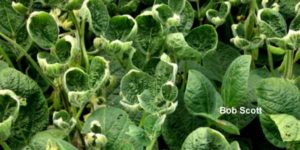
The July World Ag Supply and Demand Estimate Report (WASDE) didn’t make many changes from the previous month. In fact, it wasn’t worth much at all to a lot of the industry. USDA admitted it will have a better picture of planted acres in the U.S. after resurveying producers this month and releasing the updated numbers in August.
Joe Vaclavik, founder and president of Standard Grain in Chicago, says this month’s WASDE report was considered by many to be a “placeholder.”
He’s not surprised that the number didn’t change a great deal from the last report…tape
There weren’t a lot of surprises on the demand side of the WASDE report…tape
Vaclavik says the grain stocks numbers likely aren’t accurate…tape
With this round of WADE reports done, Vaclavik says the markets are very much locked in on two things. He tells agweb.com that markets will be watching weather and the August report. “Because of the variability in both crop conditions and crop progress, it’s very, very difficult for anyone to look at a weather forecast or pattern and say if it’s bullish or bearish,” Vaclavik says.
He says a lot of farmers might be looking for a rise in prices because this year’s crop is anticipated to be very small. “Just because the crop is light doesn’t mean it’s guaranteed to go higher,” Vaclavik says. “You don’t want to completely abandon any semblance of a marketing plan. We’ve been hoping to get to these corn prices, and it took five or six years to finally get back here.
“Be ready for volatility,” he added. “The environment will continue to be volatile until we learn more about the crop in August.”
Again, Joe Vaclavik is President and Founder of Standard Grains.

